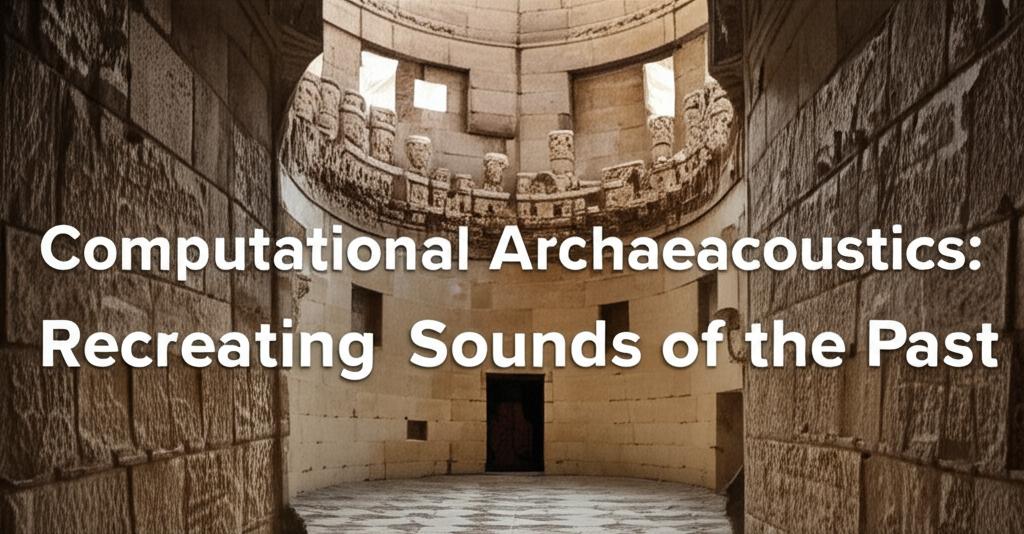Computational archaeoacoustics is a burgeoning interdisciplinary field that harnesses modern technology to explore and reconstruct the soundscapes of the past. This approach integrates archaeology, acoustics, computer modeling, and psychoacoustics to understand how sound shaped ancient environments and human experiences. By recreating these lost sonic worlds, researchers gain new insights into the cultural practices, rituals, communication, and daily lives of past societies.
Recent advancements in digital modeling, virtual reality (VR), and augmented reality (AR) have significantly propelled research in archaeoacoustics. These technologies allow for the creation of immersive virtual reconstructions of archaeological sites, even those that are significantly altered or no longer exist. Through sophisticated acoustic simulations, researchers can estimate and analyze the acoustic properties of these ancient spaces. This includes studying phenomena like reverberation times, sound propagation, and speech intelligibility within reconstructed temples, theaters, and even entire landscapes.
A key aspect of computational archaeoacoustics is "auralization," the process of making simulated or measured acoustic data audible. This allows researchers and the public to experience, to some extent, what it might have sounded like to be in a particular ancient location. For example, projects have virtually restored the acoustics of Byzantine churches, Roman theaters, and Neolithic stone chambers, sometimes incorporating reconstructed ancient musical instruments and compositions. These auralizations can help in understanding the intended purpose of architectural designs and the role sound played in ceremonies or performances.
The field is not without its challenges. Accurately modeling ancient environments requires detailed archaeological data, and the effects of materials, human presence, and even past vegetation on sound are complex variables to consider. However, ongoing research is focused on improving the accuracy of these models. For instance, some studies incorporate vegetation reconstruction in landscape archaeoacoustics, or use advanced software to simulate how crowd noise might have influenced the acoustics of ancient theaters.
Artificial intelligence (AI) and machine learning are also beginning to play a significant role in advancing acoustic pattern analysis. AI algorithms can help predict and reconstruct sound patterns with greater accuracy, automate data collection, and analyze vast amounts of acoustic data more efficiently. Furthermore, new non-destructive techniques, such as automated sonic tomography systems, are being developed to inspect the internal structures of historical masonry, providing crucial data for accurate acoustic reconstructions.
The preservation and management of "sonic heritage" is another important facet of this field. By documenting and recreating historical soundscapes, researchers aim to conserve this intangible cultural heritage for future generations. This can involve archiving 3D fragments of intact soundscapes, which may serve as proxies to document environmental changes over time.
Interdisciplinary collaboration is crucial for the continued growth of computational archaeoacoustics. Experts from fields like anthropology, architecture, musicology, and digital technology bring diverse perspectives that enrich the understanding of sound's role in ancient societies. As technology continues to evolve, so too will our ability to listen to the echoes of the past, offering profound new ways to connect with and comprehend human history.

